|

This part of the land has remnants of the original prairie
grasses as well as planted imported grasses. The tall one here is native--Indiangrass coming into
flower. The golden spears are impressive in early-mid fall.
|
|
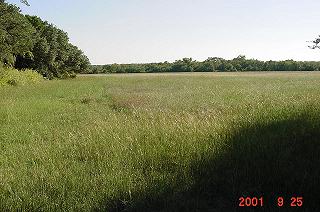
One of my favorite views, from the angle of the dry woods (on
left) and north fenceline (behind me.) This is the west end grass, where we see the female harrier
most often. The line of trees in the distance runs along the creek in the upper part of the
picture. The creek runs from right to left.
|
|
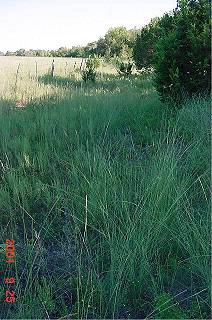
View south along old drift fence, roughly
parallel to creek; the creek is to the right (not visible) and the thicker woods ahead are the
lower creek woods. This area has suffered a lot of erosion. In floods, the creek overflows here and
scours the gravel; water also pours off the field to the left. We have now built 4 gabions across
this area to slow floodwater.
|
|
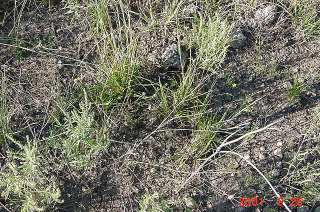
Bare, rocky soil with a little short grass and various
forbs. The grass is pedestaled (soil washed away around its roots, leavin each clump sitting on a
little hump of soil.) Still, this gravelly area has some plants not found elsewhere on the land.
They were apparently removed (overgrazed or done in by cultivation) from the other places they
"should" be.
|
|
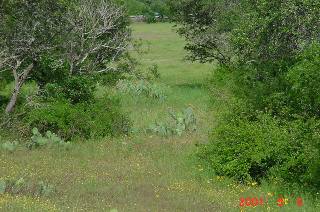
A view down from the "knob" in the dry woods, out across the east end
grass to the highway.
|
|
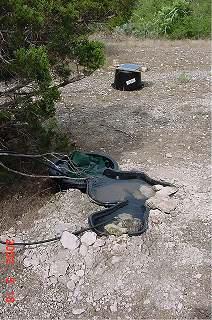
This supplementary water source, up on the dry rocky knoll,
has moving water powered by the sun: the solar panel powers a small pump in the lowest container.
We put rocks in the two shallow containers to let small animals and birds drink safely.
|

![]()
